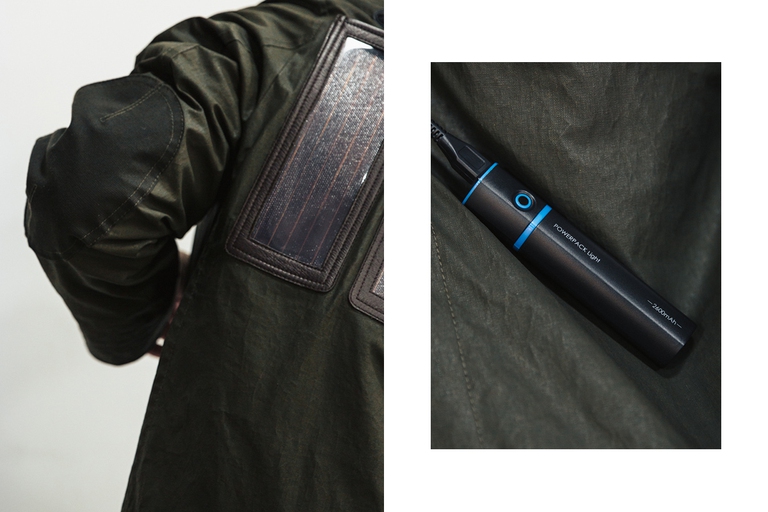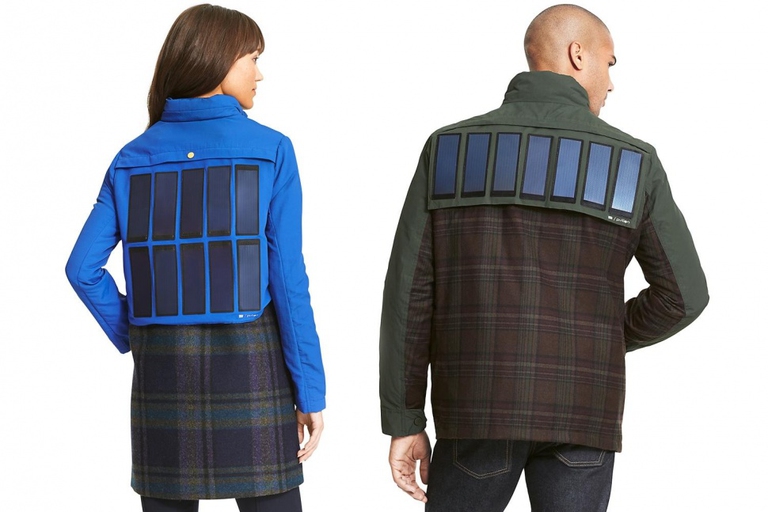
By recovering clothes discarded in the West, Togolese designer Amah Ayiv gives them new life through his high fashion creations.
There are ever more garments with built-in solar panels. From solar coats to necklaces.
Surely someone considers them provocations rather than functioning pieces of cloth. But for some others the question is different. Just as the idea of Japanese fashion designer Junya Watanabe working for fashion house Comme des Garçons who realised a coat with solar panels that can charge the devices connected to it. You just need to connect the USB cable to the port that is in the lining of the coat and the work will be done.
The coat is part of a haute couture collection, a sign that this type of technology is coming together with the world of fashion. Of course not everybody could afford the garment realised by Watanabe since it will cost around 2000 euros. And those who wear it will of course be original.
This garment is not the first of its kind. Over the years a solar bikini and a showy necklace were realised with small modules in crystalline silicon that are able to capture solar rays. And there were also entire collections dedicated to solar clothes. As the one designed by Tommy Hilfiger, who little time ago sold garments for women and men for about 600 euros.
The technology used in this case is a series of removable, waterproof and flexible solar panels that, if exposed to the sun, can completely charge a battery that, in its turn, can charge a mobile device of 1500mAh, that is any smartphone.
Wearable technology is being developed by all fashion houses, from sportswear brands to more fashionable clothes. Probably, in a near future, we will find a way to realise a special fibre that can capture the sunlight to produce energy for tens of electronic devices we use every day.
Click here to discover more
Siamo anche su WhatsApp. Segui il canale ufficiale LifeGate per restare aggiornata, aggiornato sulle ultime notizie e sulle nostre attività.
![]()
Quest'opera è distribuita con Licenza Creative Commons Attribuzione - Non commerciale - Non opere derivate 4.0 Internazionale.
By recovering clothes discarded in the West, Togolese designer Amah Ayiv gives them new life through his high fashion creations.
All catwalks in July will be broadcast online: after Paris, it’s Milan Digital Fashion Week’s turn. And the biggest beneficiary is the environment.
The book Fashion Industry 2030 aims to contribute to reshaping the future through sustainability and responsible innovation. An exclusive opportunity to read its introduction.
From fashion to design, from architecture to construction, biomaterials and their applications are constantly multiplying. And designers are responding to this revolution in many different ways.
A new study on linen, presented at the Milano Unica trade show, highlights the material’s numerous advantages and low environmental impact.
Victor Papanek spearheaded social and sustainable design based on political awareness rather than consumerism. A biography of the author of Design for the Real World.
Two world-famous designers, Ross Lovegrove and Marcel Wanders, on the relationship between plastic and design. The stimulus for this conversation was offered by an exhibition at the past Milan Design Week inviting 29 designers to rethink their approach to this (now) demonised material.
Getting people to consume less is important, but it’s not enough. There has to be a cultural shift, and design is likely to have a key role in transforming our approach to plastics.
A journey to discover leather tanneries in Dhaka, the capital of Bangladesh, among terrible working conditions, pollution and laws left unenforced.









